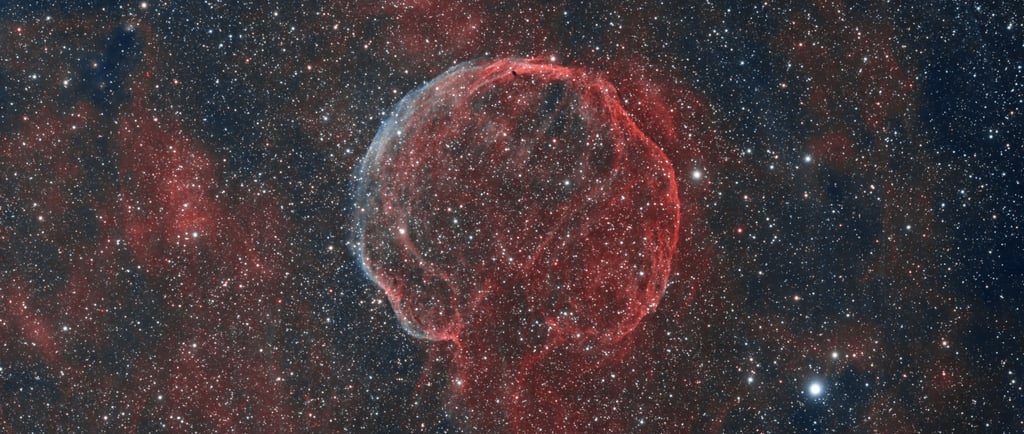CTB 1: Medulla Nebula


Introduction to the Medulla Nebula
The Medulla Nebula, associated with the celestial bodies ctb 1 (G116.9+00.1) and ajg 110, stands as a captivating supernova remnant situated within the constellation Cassiopeia. This intriguing astronomical phenomenon was first identified as a radio source back in 1960, during an extensive study of galactic radiation conducted at a frequency of 960 MHz. Its discovery marked a significant milestone in our understanding of stellar explosions and their aftermath.
The Characteristics of the Medulla Nebula
As a supernova remnant, the Medulla Nebula showcases remarkable features that illuminate the life cycle of stars. Primarily, it consists of matter ejected from a supernova explosion, which expands into the surrounding interstellar medium. This expansion generates shockwaves, leading to the heating of the surrounding gas and dust, creating regions of ionized material. The Medulla Nebula's unique position in Cassiopeia allows astronomers to study its composition, morphology, and the processes at play following a supernova event.
Astronomical Significance and Future Research
The study of supernova remnants like the Medulla Nebula is vital for various fields of astrophysics. It aids in our comprehension of cosmic evolution, chemical enrichment of the universe, and the formation of new stars. The interaction between the expelled material and the interstellar medium provides a fertile ground for ongoing research. Future observational campaigns, leveraging advanced radio telescopes and space-based observatories, promise to deepen our knowledge of the Medulla Nebula and similar celestial phenomena.
In conclusion, the Medulla Nebula remains a significant subject of study among astronomers and astrophysicists alike. Its position in the constellation Cassiopeia, coupled with its characteristics as a supernova remnant, opens a window into the intricate processes that govern the life cycles of stars. As research continues, the Medulla Nebula not only enriches our understanding of the cosmos but also embodies the intricate dance of stellar creation and destruction that defines our universe.
